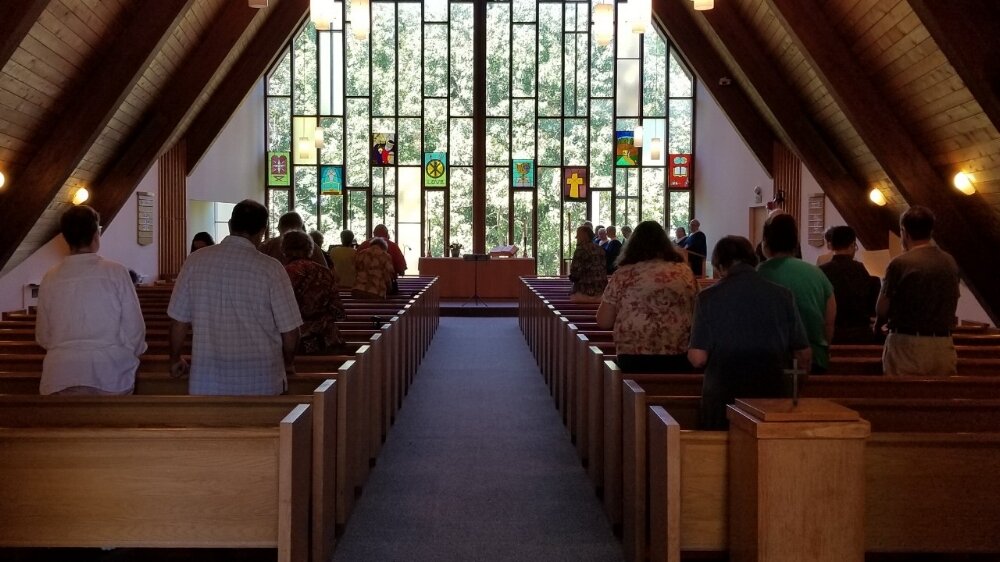
Our Stained Glass
In the Middle Ages, when few people could read, books were scarce, and Latin was the language of the educated, religious instruction for Christian lay people was provided through art. Builders of churches and cathedrals used windows made of stained glass to depict scenes from the Bible and stories of the heroes of faith.
The series of stained glass panels in the front of our sanctuary serve this purpose for us. They visually represent the seasons of the Christian year and it chief festivals, from Advent to Pentecost.
The panels were designed by Donald Graves, a member of the congregation in the 1970s. All but one of them were made by Don as his gift to the Church. The one not made by him was the Epiphany window, which was made by Gail Granucci according to the sketches completed by Don just before his death. Don had no formal training in stained glass crafting; he developed his skills by watching others at work and reading about it.
Advent
The first panel depicts the theme of Advent: hope for the coming of God’s Messiah. The empty manger in the lower part of the picture awaits the Christ. The rounded stones suggest the tablets of the law, and the star in the center recalls the hope expressed in Numbers 24: “A star shall come forth out of Jacob, and a scepter shall rise out of Israel.” These are reminders that Jesus was the fulfillment of “the law and the prophets” and God’s response to the hopes of Israel.
Christmas
The child is now visible in the manger, and the large star in the center pointed toward the manger recalls the Heavenly light that heralded his birth. The framework of the stable also appears in the picture.
Epiphany
The Feast of Epiphany on January 6 commemorates the visit of the Wise Men to Bethlehem. They were the first known Gentile visitors to Jesus, and their coming was a sign that Christ came to be the Savior of all the world, not just of the Jews. The Wise Men depicted in the window are young, middle aged and old, as a way of showing the Jesus is for all people.
Baptism of Jesus
The first Sunday after Epiphany is a commemoration of the baptism of Jesus. In that event, the Spirit of God (represented by a dove) descended on Jesus, and God’s voice was heard saying, “This is my beloved Son.” The hand at the top of this panel is a symbol representing God, and the dove is for the holy Spirit. The Chi Rho in the center is a monogram of the first two letters Chi (X) and Rho (P), of the Greek word for Christ. The circle is a symbol of eternity, and thus of the eternal existence of our Lord. The word “Love” at the bottom reminds us that God’s love is incarnate (Made flesh) in Christ.
Maundy Thursday
The Chalice recalls the cup Jesus blessed and shared at his last supper with the disciples. The stalk of wheat and the cluster of grapes are symbols of the bread and wine shared in that meal and in Holy Communion.
Good Friday
The cross is the sign of the crucifixion of Jesus. The three nails are symbols of the great suffering of Jesus at the time of his death.
Easter
The scene of the empty tomb in the garden portrayed in this panel proclaims the message of Easter morning: “He is not here! He is risen!”
Pentecost
The Day of Pentecost, the fiftieth day after Easter, is known as the birthday of the Church. On that day, the disciples were gathered together, and the power of the Holy Spirit came upon them to inspire them for their mission in Christ’s name. They went from that day into all the world to proclaim the gospel. All this is symbolized in the last panel in the series. The church--our church building-- reminds us of our continuity with the early Church, and the kneeling figures represent us in our discipleship. The open Bible represents the Word carried into the world about it. The red of the background is the color for the season of Pentecost.








